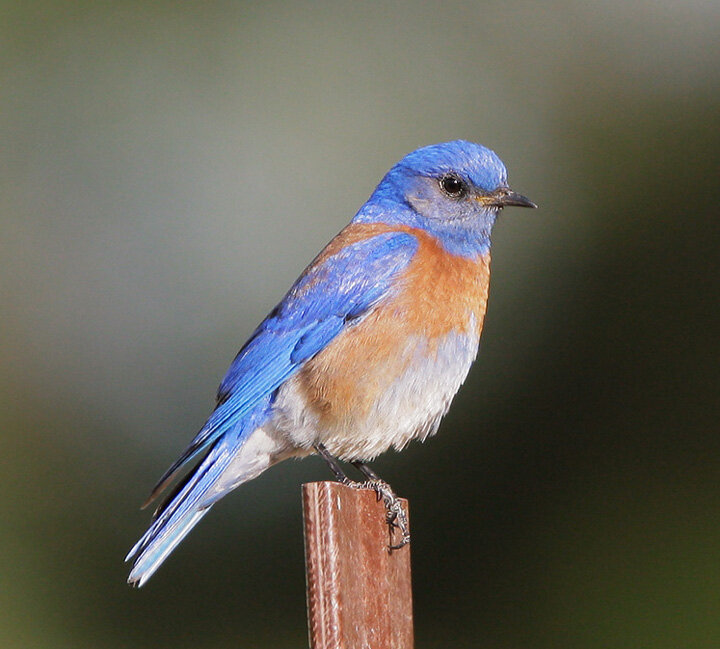Western Bluebird
Sialia mexicana
Of the two species of bluebird found in the western United States, the Western Bluebird (Sialia mexicana) is much more frequently encountered, especially in mountain forests during the summer (Long Valley for example), and in the desert lowlands in winter. Mountain Bluebirds (Sialia currocoides) are rare and irregular visitors to our Park and adjacent areas, preferring more open, high altitude plains and meadows for nesting.
Description:
Male has a bright blue hood and back, light blue wings and tail, rusty red breast, white belly. Dark eyes have white ring. Female predominantly gray-blue with a buff-colored breast. They are 6 ½-7 inches (15-18 cm) long.
Voice:
Song varied, mixture of cheer, cheer-lee, chup, and churchur; call is a chweer.
Food:
Feeds from a perch, dropping down to the ground to catch insects. Also eats beetles, ants, grasshoppers, crickets, plant fruits. Mistletoe berries are an important food source during winter months.
Nest:
Males return to the mountains around April to scout for breeding territories. Females arrive a few weeks later to mate. Grass nests are made in old woodpecker holes, tree cavities, and man-made nesting boxes. They may occasionally burrow into stream banks. Average clutch is 3-5 bluish-green eggs that are incubated 14 days. Young leave the nest after 22-25 days. Two broods may be raised in a season.
Habitat:
They prefer meadows, open woods and lower elevation coniferous forests.
Range:
Found in southern half of British Columbia and western Alberta, south to Baja California and central Mexico.
Migration:
Western Bluebirds flock together in fall as they migrate to lower altitudes and/or more southerly regions. If food resources are available, they may remain in the mountain areas further into winter.
Comments:
Bluebirds capture food in three ways: Perching: They perch on a branch with a good view of the immediate vicinity; sitting quietly. When animal or plant food is spotted, the birds fly to the ground to capture it. This method conserves energy. Flycatching: Birds chase insects through air; this uses a lot of energy. This method is most often used during the nesting period when a lot of food needs to be captured for their young. Hovering: Rapid wing-flapping to keep bird in a fixed position in the air. They can look out 10-20 feet, spy food, and drop down to get it. This method is most often used by the Mountain Bluebirds.
Photo Courtesy of Tom Grey
3/20/21/ok


